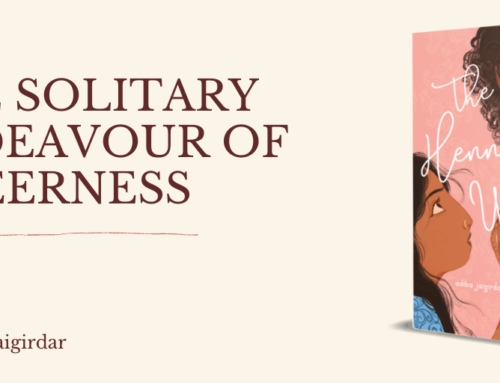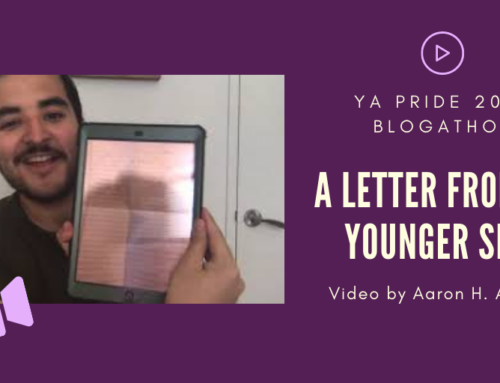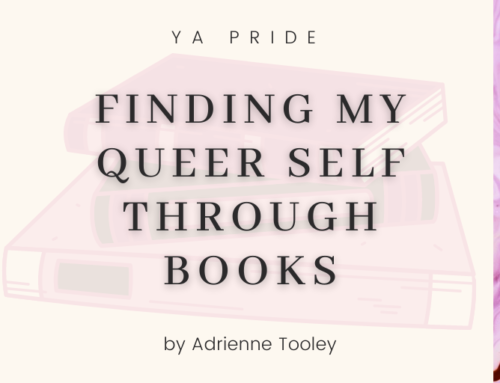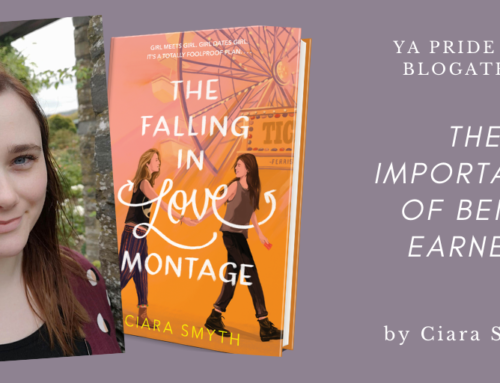by Emily O’Beirne
Does every single LGBTQ young adult book have to be a coming out story?
This is a sighed-out question we hear a lot these days. And while I do think that we need to pause and take some small pleasure in the fact that we’ve reached a cultural point where we can complain about the ubiquity of any kind of LGBTQ story, there’s definitely a glut of coming out narratives dominating this corner of the world. But let’s not kid ourselves, either. We’d be misguided to think that coming out stories are not still a vital part of telling stories about LGBTQ teen lives. Because this is the time when questions of sexuality and love and identity become questions of the self, and coming out narratives give teens who are going through the experience some perspective and comfort in knowing they are not doing this alone—even if it feels like it sometimes.
But we’re also in a place now where coming out stories need not be the only story we tell. In saying that, of course, I’m not suggesting that a LGBTQ teen character’s sexuality should not be a part of the story. Because it should. Because at the other, more dangerous end of the representation scale we have a type of LGBTQ representation Robin Talley and Luke J.W. Johnson lamented way back back in 2013 (and still continues to be problematic). This is the highly problematic ‘just happens to be gay’ character whose sexuality is of no incidence to the narrative. This character construct, they (rightly) argued, can often ignore the depth and complexity of modern gay lives. It also disregards the way one’s sexuality inflects the everyday lived experience in a range of ways both large and small. Representation of this lived experience, they argue, should not be traded in for the the limiting, superficiality of what might on the surface seem like a positive ‘non-issue’ form of representation.
So what exists for LGBTQ representation in the space between the coming out narrative and those ‘just happens to be gay’ stories? Is there a richer, more complex range of stories to be found than this? Books that tell teens stories about something other than coming out, but that do not entirely ignore their sexuality, either?
The good news is that yes, there is a growing number of books that are doing just that.
And guess what? Plot twist: they’re mostly occupied with the same, ubiquitous themes that have pervade the YA landscape. They deal with issues of love, sex, friendship, fitting in, authority, and identity. But, just as importantly, they are being told through the specific lens of the LGBTQ experience.
This is something I wanted to do in my latest book, Here’s the Thing. I wanted to write a story about a gay character who has already gone through the process of coming out, and whose sexuality was not the main issue of the book. Instead I wanted to write a story about friendship and family. About the feeling of dislocation, and trying to change the world. I wanted to write about these things as experienced by a gay teenage girl. While Zel’s sexuality is not the focus of the story, it’s definitely present as she deals with making sense of the blurred lines between romance and friendship, with faulty gaydars, and with the constant process dealing with people’s reaction to her sexuality.
And I am definitely not alone in trying to tell these stories. Another book that deals similarly with the awkward, sometimes hard-to-read lines between love, sex and friendship rather than focusing on coming out is David Levithan and Nina LaCour’s You Know Me Well. The novel establishes both characters, Ryan and Kate, as gay from the outset. One of them, Ryan, is struggling with a huge, unrequited crush on his best friend, Ben, who he has an off-and-on sexual relationship with. Ben will not acknowledge this relationship as anything more, while Ryan harbours strong feelings for his friend. The book does not focus on the coming out process, but rather on the way the main characters deal with their individual issues related to friendship, sex, and learning to trust in their ability to love.
You can’t write YA narratives without touching on themes of sex and sexuality. However, there are still very few LGBTQ YA books that deal with sex beyond the the recognition and acceptance of not experiencing heterosexual desires. These narratives are necessary of course, because the teen years are a time when, hello hormones, most kids are discovering sex. And, more dangerously, they are discovering their sexual power. Kate Welshman’s Posse is an interesting book in this realm because although it features a lesbian main character, it does not primarily focus on that facet of her sexuality. Instead the story, set at a school camp in Australia, deals more broadly with the relationship between sex and power and friendship, and the way these things can preoccupy young women in complex and even risky ways. As Amy and her friends make reckless decisions with large repercussions, Amy is also forced to confront some hard questions about the nature of her sexual relationship with her girlfriend back home.
Another prevailing obsession of the typical YA novel is the question of identity. Not surprising, really. Because the process of discovering what we mean when we say ‘I’ is fundamental to the process of growing up. These themes of self-realisation are, of course, the very stuff of the traditional coming out novel. But, even after coming out, this question of “who am I?” can impact the teen experience in a range of ways beyond sexuality.
Fitting in is often a dominant theme in YA novels, as teens struggle with the process of trying to find a unique sense of self at the same time as they are finding comfort in a crowd. As a young LGBTQ person, you are experiencing your sense of difference from others, but also wanting to conform in other, crucial ways. One example of how this can wreak havoc is in Lili Wilkinson’s Pink. Here the main character, Ava, is trying to fit in with her idealised vision of teen normality while also identifying as non-heterosexual (she never explicitly arrives at a label for herself). Ava is not comfortable with the cultural rules of taste and fashion that dominate the lesbian subculture she has found herself a part of, and longs to conform with other more ‘mainstream’ teenagers around her. At the start of the novel she takes herself off to a new school where she can act out this ideal of normal (played out in her desire to be allowed to wear pink) and try to fit in with other kids her age, but also test out the waters of not being a lesbian. Another book that focuses on a similar struggle is Bill Konigsberg’s Openly Straight. The main character, Rafe has been out for years, but tires of being that ‘gay guy’ at his school. Craving some sense of inhabiting the status quo, Rafe tries to play straight at at his new school to experience a sense of social conformity, only to slowly realise he might not want to.
Another increasingly critical question of identity is gender, and we are seeing a growing body of work that also deals with the limitations of gender labels. For instance, in M-E Girard’s Girl Mans Up, the main character Pen, is completely comfortable with the fact that she likes girls, and has a girlfriend for most of the book. This novel does not interrogate sexuality or narrate a process of coming out. Instead it tells the story of someone who is trying to negotiate the difference between how she sees herself, and the existing gender labels imposed on her from outside by friends, family and society in general, prompted by her butch indentity.
However, sometimes the identity labels LGBTQ teens go into battle with are not entirely imposed from the outside. One evocative example of this is Hannah Moskowitz’s Not Otherwise Specified. The story is about Etta, a fully-realised bisexual. As a dancer she struggles to make sense of not only the labels that others have placed on her, but the ones she has thrust on herself. Over the course of the book she is forced to recognise that just because she is a ballerina who does not exist within the tidy parameters of body type, skin colour and personality associated with the art form, that this should not and, in the end, cannot hold her back from her dreams of being on stage. But to do so, it is Etta herself who has to accept that she can be herself and call herself a ballerina.
Questions of intersectionality, of how facets of one’s political identity exists in relation to other aspects of class, race, religion, sexuality etc., are also important themes of YA narratives. For LGBTQ characters in particular, this can become a vital issue as young characters ask how the different and sometimes conflicting parts of their identity connect and cohere (or how they don’t). Christos Tsiolkas’s Loaded is an evocative example. The narrator, Ari, is a gay Australian teen who has been raised in a working-class Greek migrant family. Throughout the novel, which follows one night in his life, he struggles to reconcile his contemporary gay existence with the clashing values of his Greek-Australian identity. Gabby Rivera’s Juliet Takes a Breath, which follows Juliet’s epic summer of self-discovery, offers a thoughtful perspective on the confusions that come with negotiating a complex intersectional experience. Throughout the book we watch Juliet struggle to make sense of how being a lesbian, a Latina woman and a feminist all interplay and sometimes collide uncomfortably.
The questions of faith and belief systems is another area of identity that teens confront, as they decide which values (often imposed by family) they will carry into their adult lives. Stories about how the coming out experience has collided with questions of faith are common, but there are also narratives about the role of faith beyond this. A recent example of this is Jaye Robbins’ Georgia Peaches and other Forbidden Fruit. One central pre-occupation of the book is how the already out (although closeted temporarily at her father’s request) Jo’s Christian faith intersects with her her lived experience as a gay teenager when she moves to a more conservative, religious town. David Levithan’s Wide Awake tells the story of Duncan, a Jewish teen living in a world where a gay Jewish president may be about to be voted in. His religion and sexuality becomes vital identification points in his growing awareness of his own political values.
The books and themes discussed so far are only a portion of the growing body of YA that choose to deal with LGBTQ experiences beyond coming out. For example, two recent books featuring bisexual main characters, Rachel Davidson Leigh’s Hold and C.B. Lee’s Not your Sidekick, purposefully avoid making sexuality an issue. Instead their books, although about teens with superpowers, also focus on the prosaic but vital teen experiences of friendship, love and belonging. Genre books, like Malinda Lo’s Ash, or Marlee-Jane Ward’s Welcome to Orphancorp focus of love, power and survival, rather than the sexuality of their bi, pan and gender-fluid characters in fictional worlds. David Levithan and Siera Maley’s oeuvres feature novels that focus on themes of love and life, featuring gay and lesbian characters that have already accepted their sexuality and are exploring other aspects of their identities.
So keep the coming out stories coming, for sure. They’re important. Especially in YA. But it is also fantastic to see a growing, vibrant and multi-faceted body of books where LGBTQ kids are negotiating all the other other tricky stuff that come with being a teen. Things like love and friendship and sex and self and belief systems. Things like being or not being superheroes. We need these stories too. Stories that offers a sense of all the nuances and inflections of the LGBTQ teen experience. They are just as vital a gift for readers who are deciding who they want to be as they enter the adult world.
—
Emily O’Beirne is a writer of LGBTQ young adult fiction. Her latest book, Here’s the Thing, was released on October 19. She lives in Melbourne, Australia.








